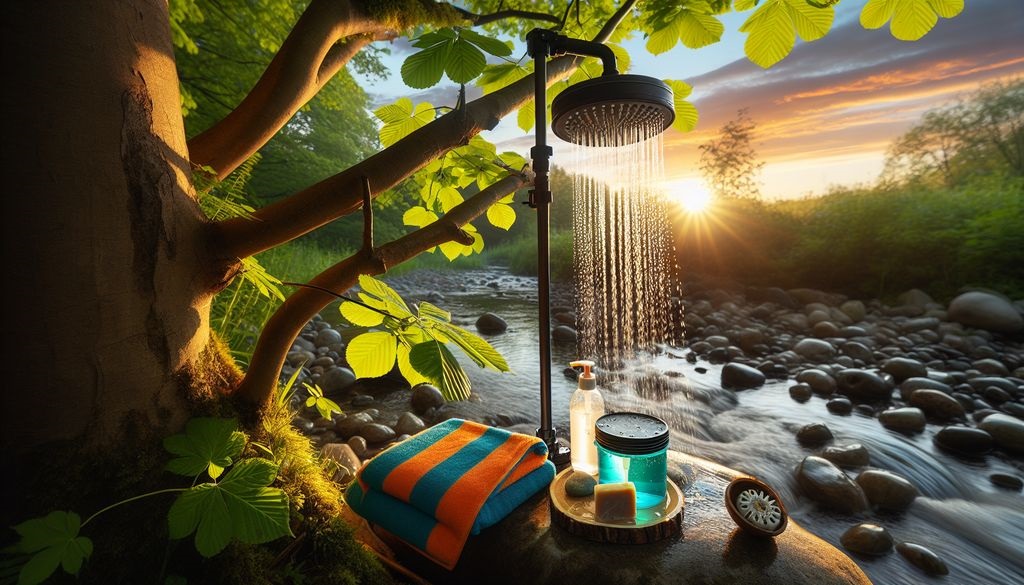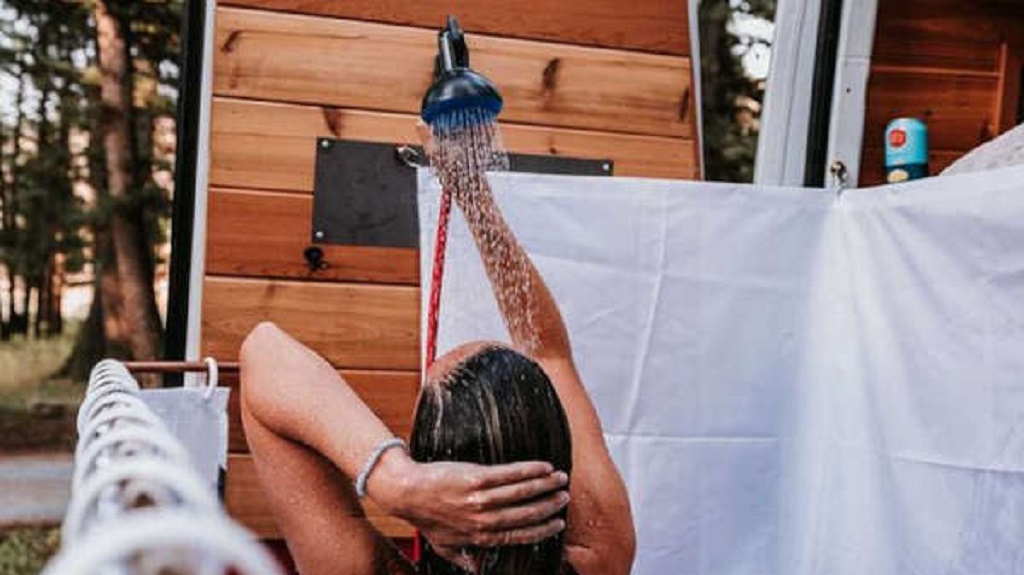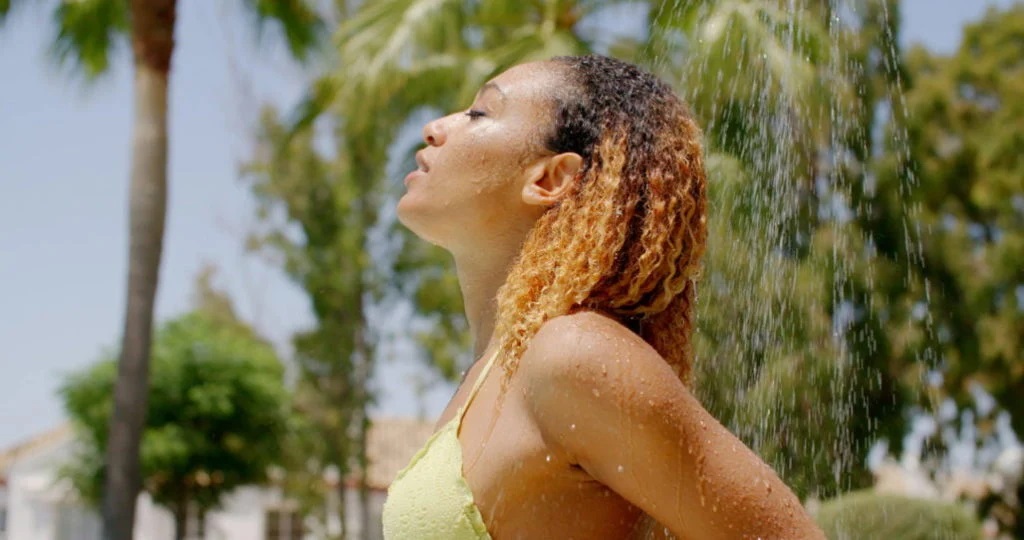
13 Feb The Ultimate Guide to Camping Showers
A hot shower can be one of life’s simple luxuries that is easy to take for granted, especially when camping outdoors. While roughing it in nature has its appeal, going too long without proper hygiene can quickly become unpleasant. Thankfully, with the right gear, you can enjoy a refreshing wash even when electricity and plumbing are miles away.
Camping showers provide a convenient way to clean up when spending time in the great outdoors. With the variety of portable shower designs now available, finding the right model for your needs is easier than ever. In this guide, we’ll explore the different types of camping showers, features to look for, setup and usage tips, maintenance recommendations, and reviews of some top products to consider.
Types of Camping Showers

When it comes to delivering water in campgrounds, caravan parks, and other off-the-grid locations, portable showers can be grouped into a few main categories:
Solar Showers
Solar shower bags use the sun’s heat to warm the water inside. They consist of a large reservoir or bladder made from plastic or vinyl, with a basic shower head attached. You simply fill up the bag, leave it to heat during the day, then hang it and enjoy a warm rinse.
Pros
- Environmentally friendly
- Simple and inexpensive
- Lightweight and compact when empty
Cons
- Dependent on sunny weather
- Can leak if cheaply made
- Water cools quickly
Battery Powered Electric Showers
Electric camping showers run off a 12-volt car battery and use a water pump to provide reliable water pressure. The pump connects via alligator clips, while a filter helps remove sediment. Most have settings to adjust the temperature.
Pros
- Convenient and easy to use
- Provide consistent water flow
- Keep the water warm in cool weather
Cons
- Require a charged battery
- Use more power than some options
Propane Gas Showers
Propane camping showers connect to a refillable gas tank to heat the water. Some feature a small water heater while others just mix with ambient air. Many have adjustable shower heads for personalized spray patterns.
Pros
- Hotter water temperature
- Don’t rely on sunshine
- Long shower times from continuous propane
Cons
- Need to keep propane stocked
- Bulkier than other choices
- Fire danger if leaked gas ignites
Portable Pressure Showers
These showers use a foot pump, battery-powered pump, or separate water tank to pressurize the flow. Water passes through a hose and shower head. Models that mix with air provide warm water without electricity.
Pros
- Good water pressure
- Don’t need external power
- Can adjust temperature
Cons
- Pumping can be tiring
- Can run out of charge
- Air models are only warm, not hot
Camp Shower Tents
Shower tents or privacy shelters give you a secluded place to wash up. Made from coated nylon or polyester, they assemble easily around a suspended shower. Some feature built-in shower floors to contain splashes.
Pros
- Give privacy when bathing
- Keep your and gear dry
- Offer UV protection
Cons
- More parts to set up
- Need space to assemble
- Can blow away in the wind
Key Features to Look For
Once you’ve decided on a camping shower type, there are some important features to consider:
- Water Capacity – The reservoir size determines the length of your shower. 5-20 liters is common.
- Water Temperature – Solar vs. electric vs. propane, or a combo.
- Flow Rate – Measured in gallons per minute (GPM). 2-2.5 GPM is a decent rate.
- Power Source – Solar, battery, foot pump, propane tank, etc.
- Adjustable Height and Direction – Flexible shower heads make it easy to position the water where you want.
- On-off Switch – Conserves water when lathering up.
- Hose Length – Longer hoses allow more setup flexibility.
- Mounting Options – Suction cups, hooks, or straps to hang from trees, poles, and vehicles.
- Durability – Leak-proof seals and resistant exterior materials.
- Weight – Lighter models around 5 lbs are easier to transport.
- Accessories – Handy add-ons like shelves, mirrors, dryers, and robes.
How to Set Up and Use Your Camp Shower
Once you choose the right camping shower for your needs, make sure you know how to properly set it up and operate it. Follow this advice for the best experience:
Pick a Suitable Spot
Find a level, clear area that allows for drainage. Near your tent works well. Check for overhanging branches too.
Assemble the Components
Unpack all shower parts and lay them out. Follow instructions to connect hoses, shower heads, pumps, or heaters.
Hang and Position
Hang or mount your shower at the right height. Adjust the angle of the spray as needed. Aim it away from your tent.
Fill the Reservoir
Use a hose, jug, or bucket to fill the clean water tank. Check the fill line. Let solar heaters charge in the sun.
Optional – Mix in Warm Water
For cool ambient air models, add some warm water to help reach your desired temperature.
Pressurize and Test Flow
Solar models may need light squeezing. Use foot pumps, electric pumps, or propane as required to build pressure. Adjust settings and test water flow until you’re satisfied.
Shower Up!
Strip down and enjoy your water pressure, warmth, and privacy. Keep soap and dry clothing nearby. Refill tanks or recharge as required.
Dry Off
Have a towel ready when finished. Change into fresh clothes right away to avoid getting cold.
Maintaining Your Camp Shower
A well-cared-for camping shower can provide years of reliable service. Follow this advice to help maximize your investment:
Rinse After Each Use
Once shower components are dry, briefly run water through to rinse out any soap residue or sediment. This prevents buildup.
Let Components Air Dry
Allow bags, hoses, and pumps to completely dry before packing away to avoid mildew. Lay flat or hang to dry.
Check for Leaks
Periodically inspect seals, caps, valves, and connections for leaks. Replace broken parts right away.
Keep Filters Clean
Clean removable hose filters regularly so they don’t get clogged. Use a soft brush and mild soap if needed.
Recharge Fuel
Keep propane tanks full. Maintain batteries by recharging them after each use. Store solar bags properly when not in use.
Winterize When Needed
In cold climates, drain water from hoses and pumps before storing it for winter to prevent damage from freezing and expanding rupturing components.
Periodic Disinfection
Sanitize the reservoir occasionally by filling it with a very diluted bleach solution, waiting 30 minutes, and then rinsing thoroughly.
Top-Rated Camping Showers

The shower model that’s best for you depends on your specific camping style, budget, and needs. Below are top-rated options to consider across the most popular categories:
Best Solar Shower – Advanced Elements 5 Gallon Summer Shower
This affordable and lightweight solar shower provides up to 5 gallons of warm water wherever the sun is shining. It has a durable polymer tank and adjustable shower head. Simple to use.
Best Electric Shower – Sea to Summit Pocket Shower
Powered by a 12V battery, this compact electric shower delivers 2 gallons per minute of constant hot water for up to 11 minutes. It has adjustable flow and temperature.
Best Propane Shower – Coleman 5-Gallon Portable Propane Water Heater and Shower
With an adjustable burner and a 5-gallon tank, this propane shower provides hot water for up to 30 minutes per fill. A 16-foot hose offers a flexible setup. Reliable for car camping.
Best Pressure Shower – Nemo Helio Pressure Shower
This high-performing model uses a foot pump to generate up to 7 psi of pressurized flow. The 11-liter tank provides steady flow, while the hose stretches up to 11 feet.
FAQs
Q: How long does a propane tank last for a propane shower?
A: Depending on tank size, propane fuel for a camping shower can last anywhere from 30 minutes to a few hours. A standard 5-gallon propane tank provides hot water for 20-30 minutes on average. Larger tanks will last proportionally longer.
Q: What PSI do most portable showers need?
A: Most portable camping shower pumps generate between 45 and 60 PSI to produce a decent water flow. Electric pumps usually produce higher pressure than foot pumps. Always check your particular model’s PSI rating.
Q: Can you use camping showers inside a tent?
A: It’s not recommended to use propane or pressurized water camping showers inside your tent due to fire risks and potential water damage. Solar shower bags are safer if hung carefully, but may still leak. Outdoor use is best.
Q: How do you keep shower water warm?
A: If the ambient air is cool, try mixing in some hot water. Propane and electric heaters will maintain temperature better than solar. Minimize pauses during your shower and insulate hoses to reduce heat loss. Shower in the warmest part of the day.
Q: What accessories are useful for camping showers?
A: Handy accessories include waterproof mats or flooring, extra hoses or fittings, clip-on shower caddies, mirrors, hooks, water filters, dry bags, portable sinks, shelves, and changing robes or ponchos.
Conclusion
A portable shower allows you to enjoy a hot, refreshing clean even when off the grid. Camping showers have come a long way in providing consistent and customizable water flow for bathing on the go. Discover 10 extraordinary places to stay, each offering a unique blend of comfort and adventure. With so many types now available, pick the features that best suit your style of camping and outdoor exploration, ensuring durable, leak-proof construction for a worry-free stay in nature’s embrace.
Follow proper setup, usage, and maintenance tips to get the most out of your shower. And consider handy accessories for added convenience. With the right gear, you can relax and feel revitalized no matter how remote the location is. The ability to maintain proper hygiene makes any camping trip more comfortable and enjoyable.


No Comments